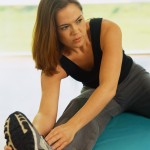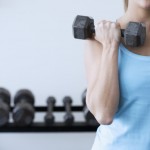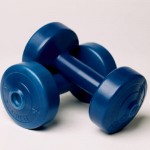 Make your planks functional: 5 variations to try
Make your planks functional: 5 variations to try
I could go on for pages about why and how a standard plank will not give you a flat stomach. Holding your abdominal muscles isometrically for as long as you can is not functional. Fortunately, there are ways to tweak the plank to make it functional. For a muscle to produce a powerful contraction, it first needs to lengthen. This does not happen in the plank, so here are five variations to ensure it does. (Please consult with a fitness professional if you are pregnant, new to exercise or unsure of proper and safe technique. And as always, seek medical clearance from you doctor prior to beginning any exercises.)
Knee to chest: start in a standard plank position: elbows bent, forearms resting on the floor and abdominal muscles braced. Use your abs to pull one knee towards your chest, bending it at a right angle and exhaling. Repeat with other knee for 10-20 reps.
Tilting hips: start in a press up position. Keeping your feet together, tilt your right hip to the side as if trying to point it to the ceiling. The same side elbow will bend a little. Go back to the start and repeat with the other hip for a total of 10-20 reps
Reverse plank: start on all fours facing the ceiling with your elbows straight, knees bent and bottom off floor. Reach to the ceiling with one hand, raising your pelvis to the ceiling and engaging your gluts. Dip your elbow and repeat for 10-15 reps before switching arms.
Up & under: start in a press up position, open one arm up as far as it goes. Bring it down under the body, reaching as far as you can before replacing it back at the start. Repeat with the other arm for 20 reps (10 each arm.)
Foot crossovers: start in standard plank. Cross one foot over the other to touch the floor outside of it, and bring back to the start. Repeat for 30 secs before switching legs.
Take a look at all moves demonstrated on YouTube.
These will hit your abdominals in three planes of motion, which is how we are designed to move. They can be added on to one of your existing workout routines or performed alone.
Gen Levrant is an Advanced Personal Trainer and fat-loss specialist operating out of a private functional training studio in Southampton UK. For fitness tips, updates and further info: http://www.fasterpt.com/personal-trainer-southampton/or email Gen via gen@fasterpt.com. Follow her on Twitter @PTGen, https://www.facebook.com/FasterPersonalTrainingSouthampton or via YouTube Channel http://www.youtube.com/watch?v=82Jii13lkNY
 Subscribe
Subscribe



